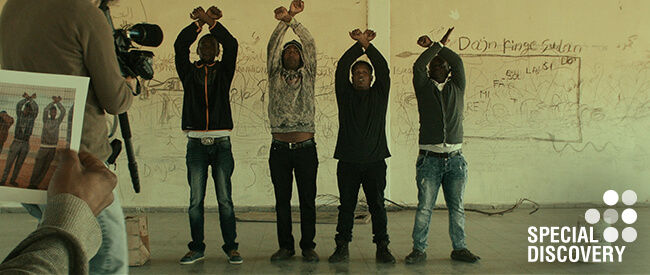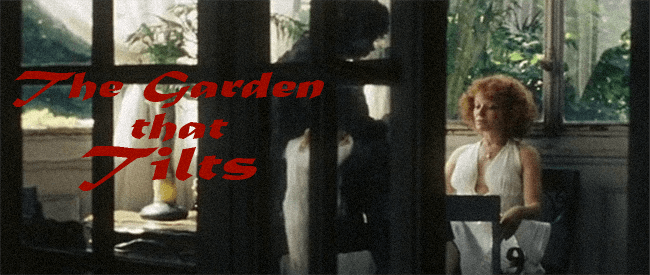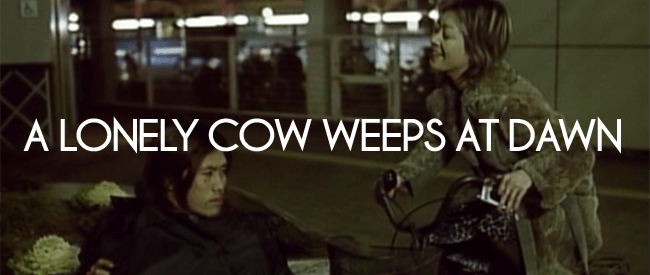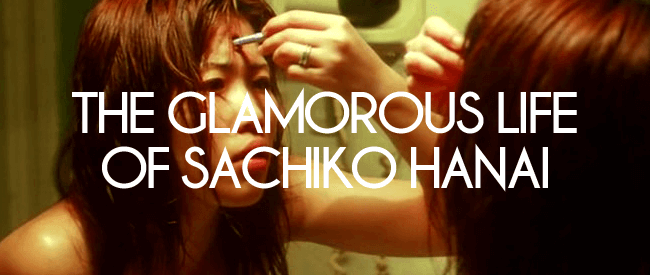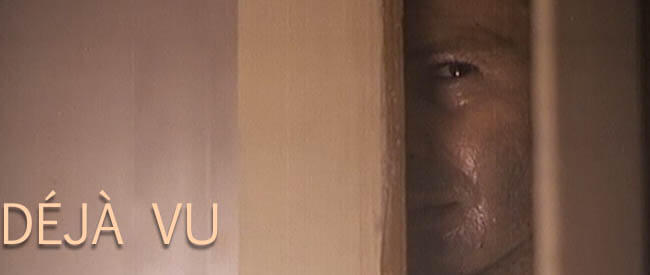SILVERED WATER, SYRIA SELF-PORTRAIT
dirs. Wiam Bedirxcan and Ossama Mohammed, 2014
Syria. 110 minutes.
In Arabic with English subtitles.SATURDAY, MARCH 11 – 7:30 PM – ONE NIGHT ONLY!
A look at first-hand video accounts of violence in modern-day Syria as filmed by activists in the besieged city of Homs.
“Introducing an essential dialectical element to the film, Mohammed’s powerful found footage essay is gradually woven into new footage shot on the ground during the siege of Homs by co-director Wiam Simav Bedirxan, a woman whose Kurdish name gives the film its title. She and Mohammed begin a correspondence, one of words but also presumably of video, he from afar in Paris and she walking the besieged streets in Syria, wandering among exploding buildings, deserted streets, and with young children in “revolutionary” schoolrooms. Her footage, more solitary, high-definition, less violent and more diary-like than than the piecemeal shotgun blast of images from Mohammed’s collection, feels like a direct extension of her sight, sensations and thoughts. Less pointed (and loaded) then the “key” sequences of the Mohammed’s montage, nevertheless Bedirxan’s images, when alongside or feathered into the found footage, speaks of filming as living, the camera “seen as a weapon by the regime.
Her footage is not of protests or bloody deaths but of the interiors, city corners, injured street cats, and young children that make up her daily, isolated life, “images,” she says, “that flee into my small camera.” Mohammed, despite some desperate-feeling footage shot in Paris, fundamentally seems to have no camera, only eyes and videos. The two, Bedirxan and Mohammed, trade longings and self-doubts, each somewhat talking to themselves, images as monologues. But when placed next to or within the work of the other, the film forms a kind of larger scale correspondence between the two, of exile and besieged, man and woman, Syrian and Kurd. He speaks of different kinds of cinema, cinema of “realism,” of “the marvelous,” of “murder,” “the poetic,” and of “fantasy.” He speaks of cinema of murderers, and of cinema of victims. Implicitly, what he speaks of and what he and Bedirxan have made is a cinema of witnessing and of experiencing, of nearness and distance, and of exile and of homeland.” – Daniel Kasman, MUBI
SILVERED WATER, SYRIA SELF-PORTRAIT is now streaming on MUBI. Available March 3 – April 2. Watch here.
Official Selection: Toronto Film Festival, Cannes Special Screening, Locarno Film Festival, New York Film Festival, Busan Film Festival, London Film Festival, Vienna Film Festival, CPH: DOX Copenhagen Film Festival and Torino Film Festival
BETWEEN FENCESdir. Avi Mograbi, 2016
Israel/France. 71 minutes.
In Hebrew, Tigrigna, and ArabicSATURDAY, MARCH 18 – 7:30 PM – ONE NIGHT ONLY!Avi Mograbi and Chen Alon meet African asylum-seekers in a detention facility in the middle of the Negev desert where they are confined by the state of Israel. Together, they question the status of the refugees in Israel using “Theater of the Oppressed” techniques. What leads men and women to leave everything behind and go towards the unknown? Can the Israelis working with the asylum seekers put themselves in the refugees’ shoes?BETWEEN FENCES will be available to stream on MUBI starting March 17. Watch here.Official Selection: Berlinale — Forum, Cinéma du Réel, Rio de Janeiro Film Festival and DocAviv Film FestivalMUBI is a curated online cinema, streaming hand-picked award-winning, classic, and cult films from around the globe. Every day, MUBI’s film experts present a new film and you have 30 days to watch it. Whether it’s an acclaimed masterpiece, a gem fresh from the world’s greatest film festivals, or a beloved classic, there are always 30 beautiful hand-picked films to discover.
Author: smacfarlane
MUBI presents: LE PARC
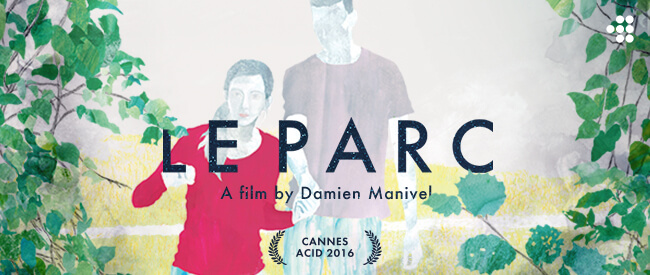
LE PARC
dir. Damien Manivel, 2016
71 minutes. France.
In French with English subtitles.
FRIDAY, FEBRUARY 10 – 7:30 PM
WEDNESDAY, FEBRUARY 22 – 7:30 PM
SATURDAY, FEBRUARY 25 – 7:30 PM
Spectacle is proud to host the New York premiere of Damien Manivel’s LE PARC, the inaugural title of MUBI Discoveries – a series of festival gems curated and presented exclusively by MUBI.
A teenage boy and girl have their first date in a park. Hesitant and shy at first, they soon discover each other, get closer as they wander, and end up falling in love. But as the sun goes down, it is time to part… And a dark night begins.
Official Selection: Cannes ACID, Vienna Film Festival, Torino Film Festival, Gent Film Festival, CPH:PIX Copenhagen Film Festival, Montreal Festival du Nouveau Cinéma, Mar del Plata Film Festival and Valdivia International Film Festival
“LE PARC plays like a remake of BEFORE SUNRISE directed by Apichatpong Weerasethakul or the late Manoel de Oliveira, offering up a shred of story filled with touches of humor and bizarre occurrences that take place in some sort of dreamlike realm.” – Jordan Mintzer, The Hollywood Reporter
“Infused with a kind of ‘realist surrealism,’ a simple magic evoked through static shots reminiscent of the work of Pedro Costa or, going back further, Robert Bresson. In the end, its whimsical notions turn out to be as appealing as they are intriguing.” – David Gonzales, Cineuropa
“A beautiful labyrinth of emotions.” – Liberation
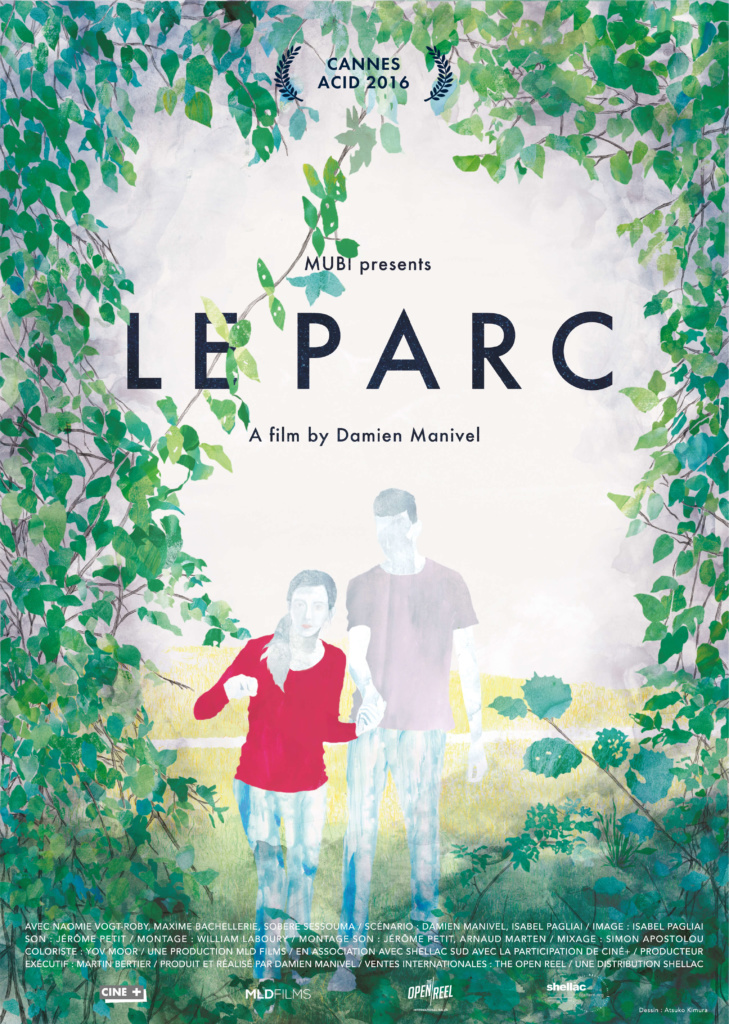
REVOLUTIONARY EXILE: SIDNEY SOKHONA
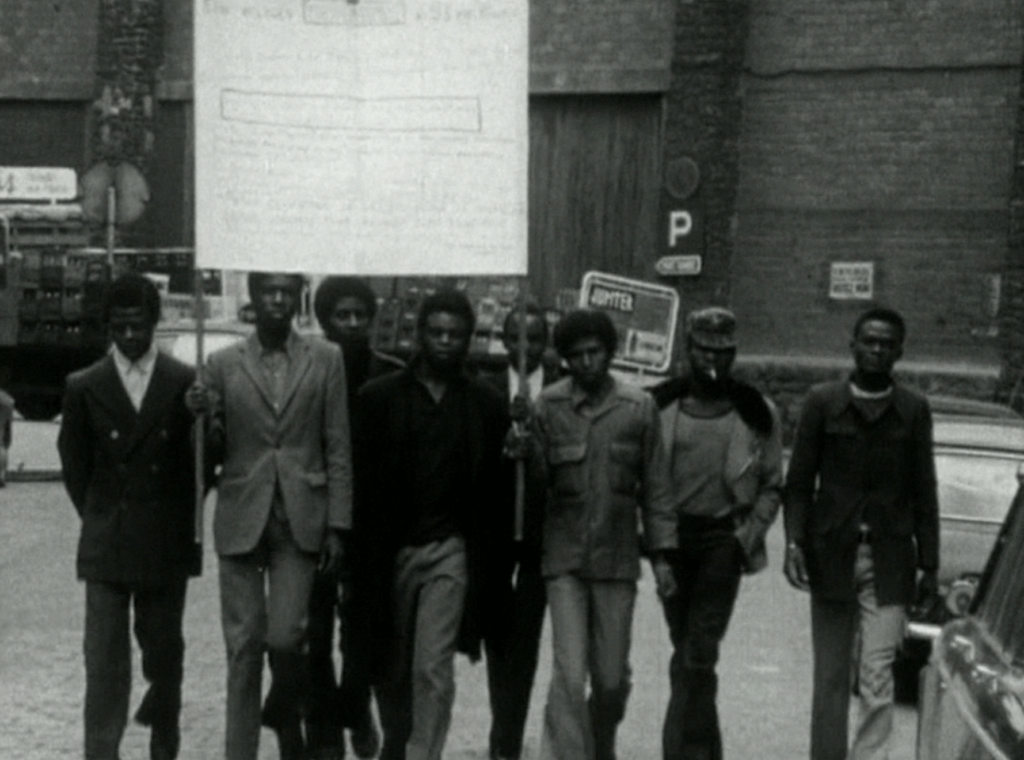
Sidney Sokhona’s NATIONALITÉ: IMMIGRÉ and SAFRANA (OR, THE RIGHT TO SPEAK) should constitute 11th-hour addendums to the canon of post-colonial Francophone cinema. Made when Sokhona was in his early 20s, recoiling from a rash of exploitations and abuses in France’s African migrant community, the films form a blistering duo: NATIONALITÉ: IMMIGRÉ dramatizes the real-life rent strike undertaken by Sokhona and his neighbors in the Rue Riquet settlement housing, a “docu-fiction” of its own community in collaboration that’s unlike anything you’ve before seen in “world cinema”.
Assuming the position of both French and African filmmaker, Sokhona published a kind of manifesto in Cahiers du Cinema entitled Notre Cinema (Our Cinema), wherein he decried the cultural feedback loop enabled by state funding (especially in postcolonial cases), the incessant use of African landscapes as backdrops for tawdry Western melodramas, and the pigeonholing of black movies in festival programming – citing that the 1976 Cannes Film Festival included CAR WASH in its main slate, but consigned Ousmane Sembene’s CEDDO to competition in Directors’ Fortnight. If SAFRANA closes on an impossibly optimistic note for Sokhona (as the audience has, over the too-brief course of two movies, come to understand him), it reveals itself in hindsight as a byproduct of the French example, wherein the the organizing onscreen bears a utopian fruit that’s nevertheless untrustworthy. (Sokhona alleges that audiences were far more skeptical about the immigrants’ warm countryside reception in discussions following screenings in Paris.) What’s universalized in the humiliations of NATIONALITÉ: IMMIGRÉ remains – or as Sokhona put it to Cahiers, “Immigration has not only served to alienate us but also to teach us to be ashamed of what we were before. Any immigrant with a conscience realizes he has as much to claim on the workers’ side as the farmers’, today.”
A consortium of West African immigrants would band together in Paris to form the Cultural Association of African Workers in France (ACTAF), an organization in solidarity with liberation struggles in former Portuguese colonies. ACTAF would become the Somankidi collective, making a healthier living off the farming practices depicted in SAFRANA – making it a sequel both political and socioeconomic to Sokhona’s first film. The laborers relocated to the Senegal river, where they remain today; founding member (and SAFRANA star/participant) Bouba Touré would later tell multidisciplinary artist Raphaël Grisey that Somankidi Coura was founded “because we didn’t want our brothers, our cousins, to come sell their labor in France.” To see 8mm images from the cooperative’s founding – vibrant young African men in snappy duds, at once relaxing and working together on a shared cane harvest – is to reckon with their post-postcolonial power. Grisey’s split panel documentary COOPERATIVE observes the ongoing collective in juxtaposition with the village’s Parisian roots of origin, whereas BOUBA TOURE, 58 RUE TROUSSEAU, 75011 PARIS FRANCE allows its namesake to contextualize the political struggles of the time (including a tacit, unignorable Pan-Africanism) while surveying the walls of his apartment in Paris.
As the Somankidi Coura celebrated its 40th anniversary this past January (complete with an exhibition of Bouba Touré’s photographs), Spectacle is thrilled to present these rare and invaluable films in their first-ever New York City screenings.
This series is made possible solely thanks to the collaboration of Raphaël Grisey, Tobias Hering of Kino Arsenal, Cinémathèque Afrique/Institut Français, and Amélie Garin-Davet of the Cultural Services of the French Embassy.
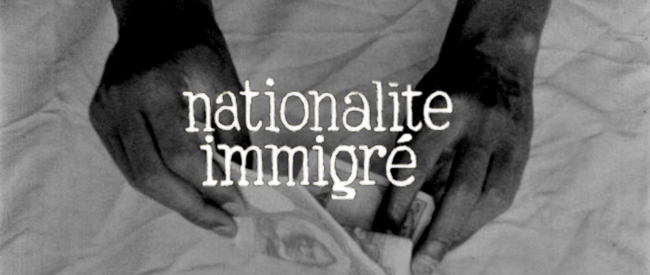 NATIONALITÉ: IMMIGRÉ
NATIONALITÉ: IMMIGRÉ
(Nationality: Immigrant)
Dir. Sidney Sokhona, 1975
France. 70 mins.
In French with English subtitles.
OFFICIAL SELECTION – 1976 CANNES FILM FESTIVAL
THURSDAY, FEBRUARY 9 – 7:30 PM
SUNDAY, FEBRUARY 12 – 5 PM
FRIDAY, FEBRUARY 17 – 7:30 PM
WEDNESDAY, FEBRUARY 22 – 10 PM
One could hardly be blamed for interpreting NATIONALITÉ: IMMIGRÉ as an endless litany of dehumanizing bureaucratic obstacle courses – as Serge Daney pointed out in his review “On Paper”, the film juts uncomfortably against the militant Left’s emphasis on using rupture theory to delegitimize the legal process, a high-minded option unavailable to immigrants like those depicted here. Sokhona took to filming after the Aubervilliers scandal of January 1970 – when five African migrants died in an overcrowded shelter on the periphery of Paris due to asphyxiation – prompting then-Prime Minister Jacques Chaban-Delmas to declare an end of these settlements, sometimes nicknamed bidonvilles or caves, by 1973. The filmmaker wasn’t so optimistic – but then, what NATIONALITÉ: IMMIGRÉ does offer is a rare glimpse at community organizing coming into praxis on both sides of the camera, with many of Sokhona’s neighbors playing themselves. (Sokhona financed the film in piecemeal fashion once scene at a time while working as a telephone operator.) While the thrust of NATIONALITÉ: IMMIGRÉ is unabashedly polemical, the loose narrative structure allows Sokhona to pursue fascinating side-stories and political tangents, at times dipping from what appears to be pure verite into a purely Brechtian exercise wherein immigrants are handed jobs in the form of huge placards, which they must carry around their necks, denoting their net worth to society in material terms.
In Cahiers, Sokhona would elaborate to Daney and Jean-Pierre Oudart that “I was not sure that he who had loved NATIONALITÉ: IMMIGRÉ would like it – which does not mean that no one can love both. SAFRANA is, for me, the continuation of N:I. At the time it was done, compared to the reality of that time, there were a number of plans in the construction of the film itself on which we had to pass. For the first time, perhaps, people saw things they had never seen – so their membership was much simpler. I think people also ask: should a film about immigration be cinema? N.I. was in black and white, there was a certain desired poverty – it’s unthinkable to film an immigrant’s home in color…. People will go see a movie; of course they will see a subject, but it must be possible to express it in a very simple way. I think a political film – or engagé – can use other weapons, and touch a large number of people taking account of the movies.”
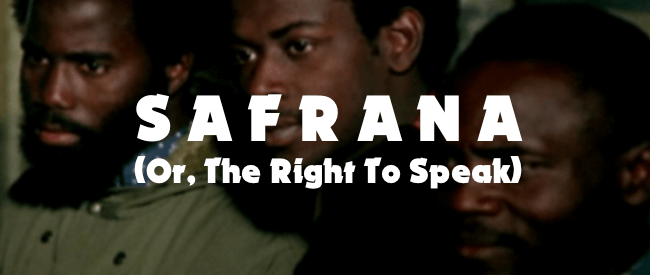
SAFRANA
(Safrana, Or, The Right To Speak)
Dir. Sidney Sokhona, 1976
France. 98 mins.
In French with English subtitles.
THURSDAY, FEBRUARY 2 – 7:30 PM
SATURDAY, FEBRUARY 4 – 5 PM
TUESDAY, FEBRUARY 7 – 10 PM
MONDAY, FEBRUARY 27 – 7:30 PM
Like Med Hondo’s SOLEIL O. and Jean Rouch’s PETIT A PETIT, Sidney Sokhona’s SAFRANA (OR, THE RIGHT TO SPEAK) is both a satire of transition after French colonialism and a look at the alienation felt by African migrant communities in nations of their former colonizers. Operating as a reverse ethnography, these films took field notes on European social norms and put their notion of what is standard into question. Alternating between observational comedy and instructional political tract, SAFRANA starts with a quote by Mao about intuitive approaches to figuring out what’s useful for one’s own country in the operations of another, and ends with a documentary on farming techniques for agrarian socialism. A road trip, punctuated by acidic flashback vignettes, gets us from A to B by sketching a former colonizer with less to offer the formerly colonized than vice versa.
The film is built around Somankidi Coura, with its ex-factory workers turned farmers playing fictionalized versions of themselves, along with photographer/activist Bouba Touré. With a number of pointed gags, Sokhona charts the various disenchantments of the workers on their exploratory stay in France meant to pick up useful techniques for their home country – from tertiary status at a factory to secondary status in a union; or the casual racism of a couple that won’t let an African garbageman pick up their dog from a trash can to another that wants to bring home a foreigner for kinks. By the time they end up at the farm, we’re as ready for the possible solutions explored in the climax as they are.
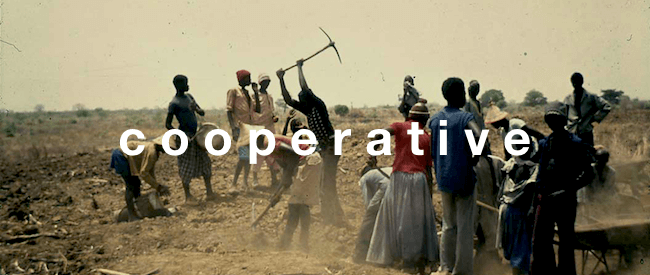
COOPERATIVE
Dir. Raphaël Grisey, 2008
France. 59 mins.
In French with English subtitles.
BOUBA TOURE, 58 RUE TROUSSEAU, 75011 PARIS, FRANCE
Dir. Bouba Touré, 2008
France. 28 mins.
In French with English subtitles.
SUNDAY, FEBRUARY 5 – 7:30 PM
TUESDAY, FEBRUARY 21 – 10 PM
TUESDAY, FEBRUARY 28 – 5 PM
COOPERATIVE refers to the agricultural cooperative in Mali founded in 1976 by former African immigrant workers who lived through the politics of 1968 in France. The juxtaposition of different spaces (the village, the fields, the Senegalese city of Kayes, the colonial ruins of the Samé Plantation, the flat of Bouba Touré, Parisian streets with demonstrations of Sans-Papiers, etc) reformulates the context of creation of the community, as well as its daily life and its mode of production. Inevitably, Grisey’s title also refers to a mode of cooperation in the filmmaking process.
BOUBA TOURE, 58 RUE TROUSSEAU, 75011 PARIS FRANCE was shot in its namesake’s home, featuring many photographs, posters and keepsakes. Shot in two takes, the video is led by the images on the wall, while Touré links many political struggles of the last 50 years with his own life.
Bouba Touré began working in the building sector and the car industry in 1963, when he arrived in France from Mali. He later studied photography and film projection at the free university of Vincennes in 1968 and 1969. In addition to starring in SAFRANA, he served 35 years as projectionist for the arthouse cinema L´entrepôt in Paris, and co-founded the agricultural cooperative of Somankidi Coura in 1976 with West African militant migrant workers. His photographic, video and archive works as well as his writings (a book titled Notre case est à St Denis 93, published in 2015) relate to social and political struggles of the migrant workers in France.
Raphaël Grisey’s video, editorial and photographic work examines various places which are interconnected by collective memories. The photographic series and book Where is Rosa L. (2001-2006) studied the traces or ghosts of various political regimes in Berliner public spaces. Using diverse documentary, fictional or essayist forms, Grisey’s work also deals with social and political issues of the day, such as immigration and post-colonial issues in France and West Africa (Trappes, Ville Nouvelle, 2003; Cooperative, 2008; Becoming Cooperative Archive 2015-present). Recent films lead him to work in Budapest (National Motives, 2011), in French students´ strikes situations (The Indians, 2011), in China (The Exchange of Perspectives, 2011), in Brazil around the social housing complex Pedregulho (Minhocão 2011), the history of the Brazilian Positivist Church (Amor e Progresso 2014) or around Quilombola communities (Remanescentes 2015; A Mina dos Vagalumes). His work includes also collaboration projects such as the films Prvi Deo and Red Star (2006) with Florence Lazar and the projects Cooperative (2008) and Becoming Cooperative Archive (2015- ongoing) with Bouba Touré.
Sidney Sokhona was born in Tachott, Mauritania, in 1952. He worked in Paris as a day-laborer, sending remittances home to his village before enrolling in film classes at the University of Vincennes. After making SAFRANA he returned to his home country to shoot newsreel and documentary footage, but never made another feature. As of this writing, he works as a diplomat for the government of Mauritania.
A GRIN WITHOUT A CAT
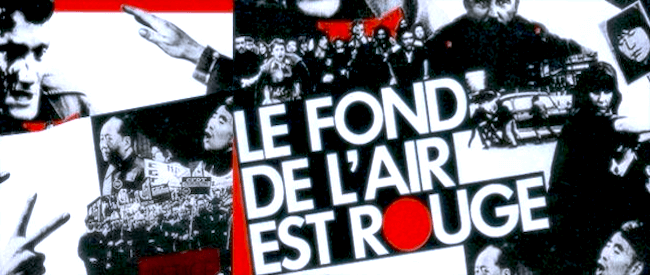
A GRIN WITHOUT A CAT
(Scenes from the Third World War 1967-1977)
aka LE FOND DE L’AIR EST ROUGE (The Base of the Air Is Red)
Dir. Chris Marker, 1977/1992
France, 180 min. (in two parts with a break in the middle)
In French, English, German, Japanese, Russian, Czech, Spanish, and more with English subtitles.
Special thanks to Icarus Films.
SATURDAY, FEBRUARY 11 – 3 PM
SATURDAY, FEBRUARY 18 – 3 PM
SATURDAY, FEBRUARY 25 – 1:30 PM
TUESDAY, FEBRUARY 28 – 7:30 PM
A GRIN WITHOUT A CAT is Chris Marker’s epic film-essay on the worldwide political wars of the 60’s and 70’s: Vietnam, Bolivia, May ’68, Prague, Chile, and the fate of the New Left.
The original French title is roughly translatable as “The Base of the Air is Red,” referring to the high hopes of the radicals at the time built on a foundation of air. Released in France in 1978, restored and “re-actualized” by Marker fifteen years later (after the fall of the Soviet Union), A GRIN WITHOUT A CAT is a masterpiece. Described by Marker as “scenes of the Third World War,” the film is divided into two parts, each weaving together two strands:
Part 1: Fragile Hands
1. From Vietnam to Che’s death
2. May 1968 and all that
Part 2: Severed Hands
1. From Spring in Prague to the Common Program of Government in France
2. From Chile to – to what?
From 1967 (the year Marker argues was the real turning point) on, A GRIN WITHOUT A CAT is a sweeping, global contemplation of a defining ten years’ political history.
“A film without a dogma, celebrating the promise of socialist ideas (the grin) while realizing that the brave new world they envision (the cat) remains elusive and intangible as its twentieth-century trial runs slip farther into the past… On a deeper level, A GRIN WITHOUT A CAT is an essay on historical memory itself.” —David Sterritt, Cineaste
“No scan of Marker’s redoubtable career achievement is complete without strapping oneself to this restless behemoth of a historical documentary… Along the way, Marker is a master weaver of colliding perspectives, forgotten stories and unanswered questions… the poetic questions he raises are never less than stunning.” —Michael Atkinson, Sight & Sound
“Much more than a weapon, more than a history lesson intended to provoke our revolutionary consciousness, this feature film is the result of lucid reflection and profound honesty.” — Michel Perez, Le Matin, November 25, 1977
“A beautiful poem in red, luminous with sensitivity and intelligence.” — Serge Richard, L’Unité, December 9, 1977
“This film is a mirror held up to each of us, a mirror that wanders through all the paths that we have taken or crossed (Vietnam war protests, pro-Latin America movement, May of ’68, the rise and fall of the Left) and encourages us to reflect along with it about the journey and its goal.” — Regis Debray, Rouge, December 28, 1977
“Image, imaginary, imagination, imagery… and revolution. Chris Marker delves into his enormous reservoir of images from the past ten years, both official and candid, sorts, selects, puts them into perspective, in context, into opposition, and by allowing us to re-see, to re-read our recent past, attempts to imagine the future.” — Alain Remond, Telerama, December 3/9, 1977
“A trial for the viewer: One cannot absorb four hours of so much history, kneaded, tormented, perpetually reexamined, without wondering if the end of the world is not near. To interpret the film in that way would be to betray its meaning, and that is where Chris Marker’s work becomes somewhat like a mirror held up to our awareness: not a traditional humanist awareness, but an active awareness. That is where progressivism regains meaning. And especially, that is where film now asserts itself as the possible and practically indispensable tool of awareness, to put back into perspective so many dashed hopes, so many betrayals.” — Louis Marcorelles, Le Monde, November 5, 1977
“Fifteen years later, his work as a filmmaker has the density of a Pierre Bourdieu sociological survey or a Fernand Braudel historical opus… In this thoughtful exercise in style, A GRIN WITHOUT A CAT teems with lost illusions, but no errors. Finally, Chris Marker’s film is being used rather than abused. The reason undoubtedly resides in this little phrase slipped into the second episode: ‘You never know what you’re filming. Until years later.’ In 1993, A GRIN WITHOUT A CAT accomplishes the tour de force of avoiding three potential pitfalls. It is not a likable witness to times past; it is not a summation, and still less the act of contrition of a lost generation. It is all about memory and social anthropology.” — Michel Chemin, Libération, April 1993
pour mémoire: A TRIBUTE TO DELPHINE SEYRIG
When Delphine Seyrig’s fairy godmother character nonchalantly descends in a helicopter upon the Medieval fairy tale realm of Jacques Demy’s DONKEY SKIN, the surreal image is pretty indicative of Seyrig’s regrettably short, enormously prolific (she appeared in over sixty films and only lived until age fifty-eight), and trenchantly unforgettable career. Seyrig had an innate ability to transcend every film in which she appeared, regardless of what auteur was directing.
She most famously worked with Chantal Akerman, Alain Resnais, and Luis Buñuel, but also Robert Frank, Francois Truffaut, and Harold Pinter. Among the first filmmakers to make use of video in France, Seyrig co-founded a radical, anarchistic collective of feminist filmmakers, directing two feature documentaries (SOIS BELLE ET TAIS-TOI and MASO ET MISO VONT EN BATEAU) and several shorts, including a wonderfully droll reading of the SCUM Manifesto with filmmaker Carole Rossoupoulos. Digging through Seyrig’s filmography is an endlessly rewarding excavation of idiosyncratic gems.
Special thanks to Jean Mascolo, Harry Kümel, Ulrike Ottinger, Women Make Movies and the Belgian Royal Cinematek.
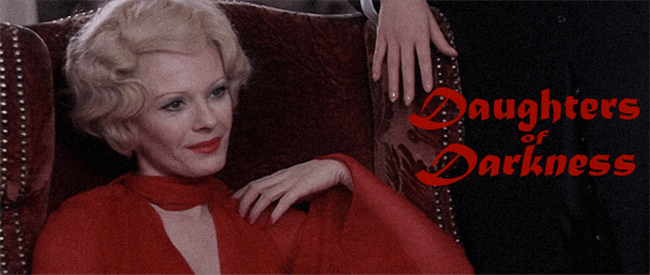
Belgium. 100 min.
FRIDAY, FEBRUARY 3 – 7:30 PM
FRIDAY, FEBRUARY 24 – 10 PM
Belgian director Harry Kümel’s high gothic vampirization of the story of famed murderess Elizabeth Báthory has retained its cult legacy due to its effervescent style and Seyrig’s carnal lead performance. The camera glides through lush colors and haute hotel rooms like in a Fassbinder or Sirk melodrama as Seyrig’s bloodthirsty queer countess preys on a pair of newlyweds. By contemporizing the vampire into a decadently erotic queer demagogue, Kümel paved the way for Tony Scott’s THE HUNGER more than a decade later.
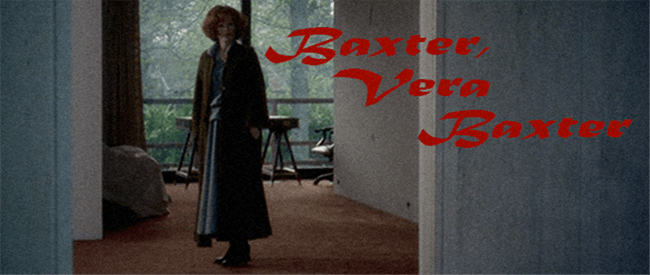
France. 91 min.
TUESDAY, FEBRUARY 7 – 7:30 PM
SATURDAY, FEBRUARY 11 – 7:30 PM
The masterful Marguerite Duras takes a concept ripe for portentous melodrama — slimy Gerard Depardieu sells his wife (Claudine Gabay) to erase a debt —and minimizes it, radicalizes it, and chills it into droll satire with an enrapturing cadence. Seyrig plays an unknown woman who is inexplicably drawn to Gabay’s Vera when she hears her name. She gradually interrogates Vera, and their conversation becomes entangled with Carlos d’Alessio’s omnipresent, repetitive score. Duras’ film is an exhausting, rewarding experience, and truly one of a kind.
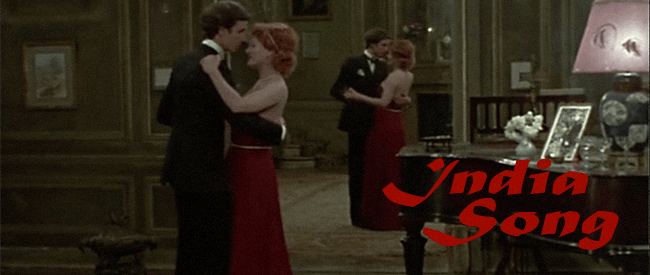 INDIA SONG
INDIA SONG
Dir. Marguerite Duras, 1975.
France. 115 min.
SATURDAY, FEBRUARY 4 – 10 PM
FRIDAY, FEBRUARY 17 – 10 PM
MONDAY, FEBRUARY 20 – 7:30 PM
Marguerite Duras had previously directed Seyrig in the 1967 adaptation of her own play LA MUSICA; their re-teaming in 1975 marked a masterful standout in both of their careers. A tale of doomed love amidst 1930s colonial India, the film is a mysterious mesh of haunting memories, and Duras’ most lauded work.
“The most feminine film I have ever seen, … a rarefied work of lyricism, despair, and passion, … imbued with a kind of primitive emotional hunger.” – Molly Haskell
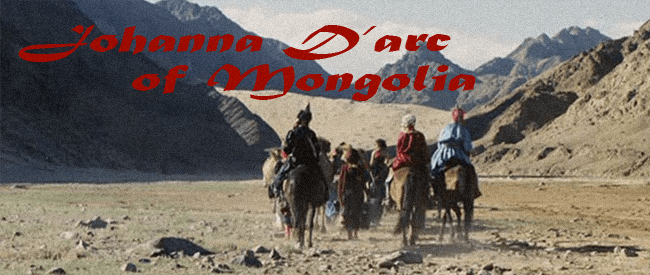
JOHANNA D’ARC OF MONGOLIA
Dir. Ulrike Ottinger, 1989.
Germany. 165 min.
SUNDAY, FEBRUARY 12 – 7:30 PM
WEDNESDAY, FEBRUARY 15 – 7:30 PM
SUNDAY, FEBRUARY 19 – 7:30 PM
Seyrig’s last screen role found her fittingly re-teaming with Ulrike Ottinger for a tri-lingual adventure epic with an all woman cast. Ottinger plays with the genre trappings of train triptychs and biblical epics in her most ambitious work, in which seven female voyagers are captured by a band of Mongolian woman. Ottinger’s goal isn’t to pit cultures against each other or exploit them, but to tell an extensively details ethnographic tale of multicultural harmony.
“A fabulous three-course blend of myth, spectacular visions of an ancient land and frisky song-and-dance. A quixotic and ebullient leap of the imagination. Breathtaking.” – Judy Stone, San Francisco Chronicle
THE GARDEN THAT TILTS
Dir. Guy Gilles, 1974.
France, 80 min.
WEDNESDAY, FEBRUARY 8 – 10 PM
SATURDAY, FEBRUARY 18 – 7:30 PM
MONDAY, FEBRUARY 27 – 10 PM
An underrated oddball from French director Guy Gilles, THE GARDEN THAT TILTS is reminiscent of Rohmer at his most contemplative and painterly, except the action revolves around an ice-cold assassin (Patrick Jouané) who falls in love with his mark (Seyrig). Jeanne Moreau also co-stars (and sings!).
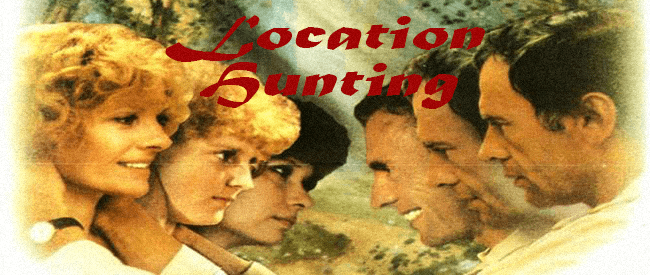
LOCATION HUNTING
Dir. Michel Soutter, 1977.
Switzerland, 87 min.
MONDAY, FEBRUARY 6 – 7:30 PM
SUNDAY, FEBRUARY 19 – 5 PM
Michel Soutter was a founding member of the New Swiss Cinema movement, and his early films are among the country’s best-kept secrets. He branched out slightly into more international fare in the ‘70s, directing French legend Jean-Pierre Trintignant in several films. Rarely seen, the metatextual chamber drama LOCATION HUNTING stars Trintignant as a filmmaker desperate to win back the affections of his ex-wife of ten years (Seyrig). He casts her in an adaptation of Checkov’s Three Sisters, and they sound find themselves isolated together with two other actresses on a location scout to an aging Swiss resort.
INDIE BEAT: TEARS OF GOD
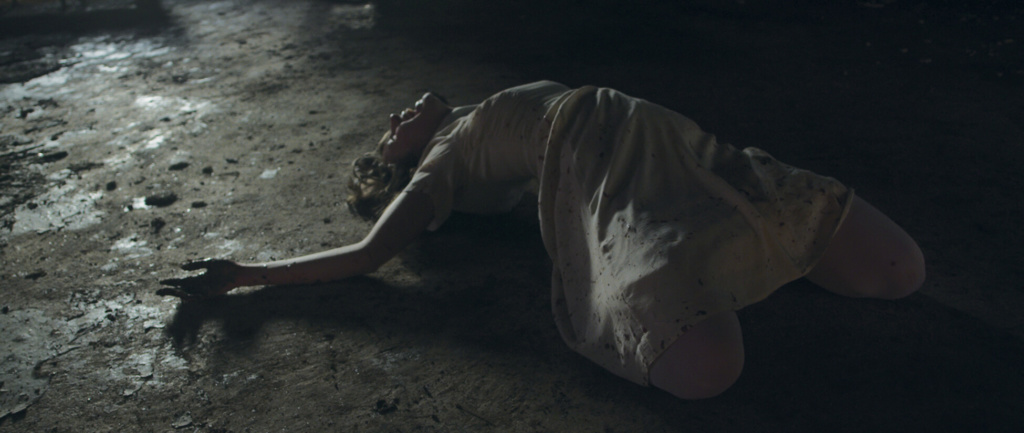
TEARS OF GOD
Dir. Robbie Hillyer Barnett, 2016
68 mins. USA.
THURSDAY, JANUARY 12 – 7:30 PM – FILMMAKER IN PERSON!
In collaboration with The Playlist’s Indie Beat podcast, Spectacle is pleased to present a one-night-only special screening of Robbie Hillyer Barnett’s TEARS OF GOD. Longing for reunion with the dead and seduced by the chaotic allure of possession, a young woman struggles to find meaning in a barren, apocalyptic landscape, while those around her succumb to despair and madness.
“Just about every scene in Barnett’s debut is breathtaking; cryptic and haunting, TEARS OF GOD is downright astounding, especially the wandering cinematography, apparition-like in its recordings.” – Kevin Rakestraw, Film Pulse
Robbie Hillyer Barnett is a Los Angeles based filmmaker, originally from North Carolina where he completed TEARS OF GOD, a feature-length arthouse horror film starring Kate Lyn Sheil (The Girlfriend Experience, House of Cards), Samuel T. Herring (of the band Future Islands) and Lindsay Burdge (The Invitation, A Teacher), as well as a stereoscopic 3-D short film TALK ABOUT YOUR DREAMS also starring Kate Lyn Sheil and Sophie Traub. Robbie has also recently released a Japan-set virtual reality film, DAYS OF BEING MILD.
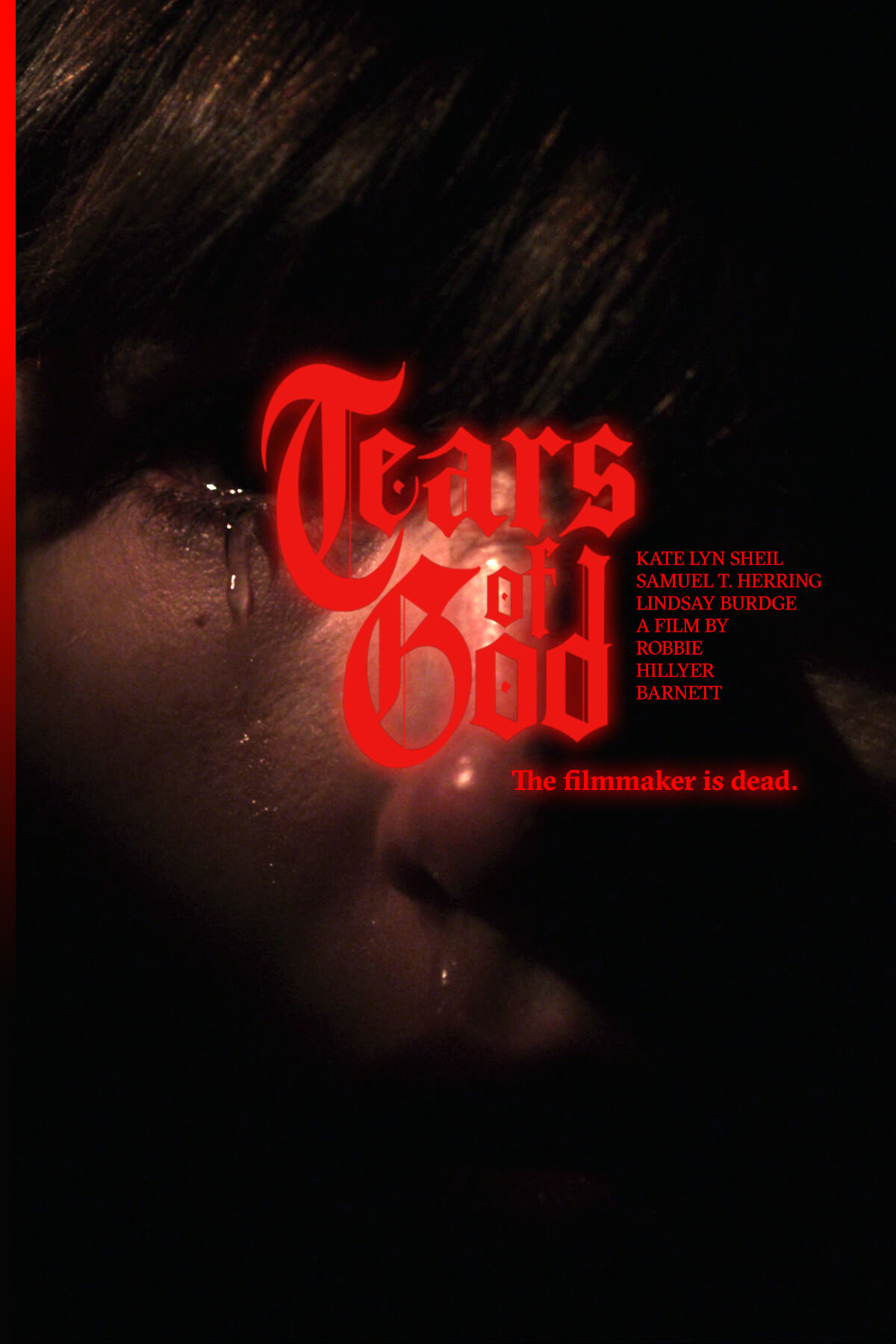
THE EYE’S DREAM
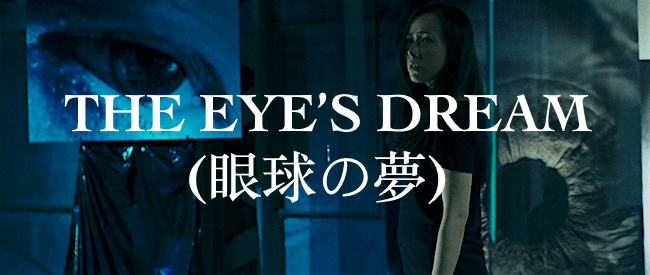 THE EYE’S DREAM
THE EYE’S DREAM
(aka GANKYU NO YUME)
dir. Satō Hisayasu, 2016
Japan, 102 mins.
In Japanese with English subtitles.
FRIDAY, DECEMBER 16 – 7PM **North American Premiere!**
GET YOUR TICKETS!Special thanks to the Sensory Ethnography Lab.
Not for the faint of heart or weak of stomach, Sato Hisayasu’s mind-bending horror-cum-Pink Film seems made to render audiences disturbed (or at least immensely uncomfortable). In THE EYE’S DREAM, a one-eyed photographer with an eyeball fetish photographs the eyes of passersby on the streets of Tokyo; a neurologist-filmmaker enlists her to act in his film. Reality begins to merge with fantasy, and neither is able to tell the real world from the world of their nightmares. Meanwhile, a mysterious eyeball-thief rampages the streets of Tokyo, looking for wide-eyed victims. The result is nothing if not schizotypal– and rather sadistic, as if Bataille’s Story of the Eye were narrated by Alex from A CLOCKWORK ORANGE.
Yet Satō’s latest is not all blood and gore: the film emphasizes visuality and voyeurism, and many scenes are rather quiet. It also features scenes set in the infamous “Sea of Trees”: a forest near Mt. Fuji famous for its many suicides. Disturbing and psychedelic, both understated and insanely over-the-top, THE EYE’S DREAM is typical of Sato Hisayasu’s filmmaking. Famous for making not only Pink but V-Cinema splatter films, Sato’s films emphasize obsession, voyeurism, and perversion, and leave little to the imagination. He is also one of the “Four Heavenly Kings of Pink,” and came to prominence in the mid-1980s.
THE EYE’S DREAM has an odd production history for a Pink Film: it was produced by Verena Paravel and Lucien Castaing-Taylor of Harvard University’s Sensory Ethnography Lab, the outfit behind masterpieces like LEVIATHIAN (2012) and SWEETGRASS (2009). Paravel and Castaing-Taylor documented the creation of Satō’s film, and are currently working on a documentary about its production; only time will tell how the often transcendent films of the S.E.L. will align with Sato’s blood-spattered thriller.
IMAGINARY NEW YORK
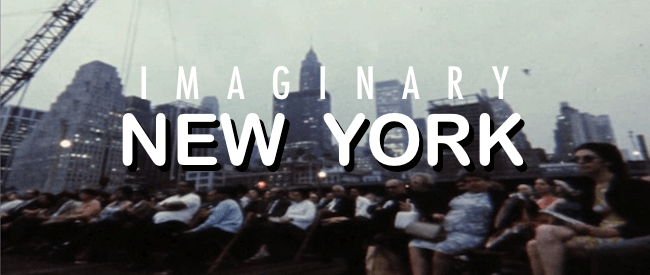
MONDAY, DECEMBER 12 – 7:30 PM – ONE NIGHT ONLY
New York City exists as much in our collective imagination as it does in reality, and this imaginary conception of the city is due in no small part to its history of filmed representation. In this combination lecture and screening, New School for Social Research professor Zed Adams will discuss the role that the John Lindsay administration (1966-1973) played in bringing on-location filming back to NYC in the sixties and seventies. The effect of Lindsay’s administration was immediate and drastic: in the year before he took office, only 11 films were shot in NYC; in the year after, 223 were shot. Moreover, it was during this period that the “grittiness” of NYC came to be embraced on screen–think of MIDNIGHT COWBOY (1969) and THE FRENCH CONNECTION (1971).
Apart from the lecture, clips will be played from two documentaries from this period: John Peer Nugent’s WHAT IS THE CITY BUT THE PEOPLE? (1969) and GEORGE PLIMPTON’S NEW YORK (1979), originally made for CBC.
Zed Adams is Associate Professor of Philosophy at the New School for Social Research. He is the author of On the Genealogy of Color (Routledge, 2016) and the editor of Giving a Damn: Essays in Conversation with John Haugeland (MIT, 2016).
EROS + MASSACRE: 50 YEARS OF PINK FILMS
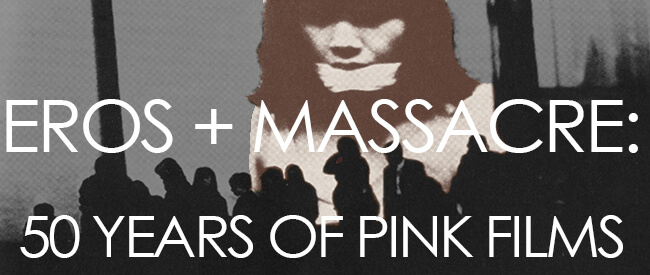
Pink Film remains one of the most fascinating, idiosyncratic, and puzzling of genres in Japanese film. It is also one of the most varied– and most misunderstood– genres in film history. On one hand, it was linked with the underground madhouse of the Japanese political avant-garde, especially through the auteur Wakamatsu Koji. The genre originally launched with a flurry of new director talent in 1962, and became immediately linked with a subversive counter-culture. Those college students with eyes glued to a Wakamatsu retrospective at a dingy Shinjuku theatre also participated full-force in the political protest movements of the 1960s. On the other hand, Pink Film is a sexploitation genre, and many of its films were churned out wholesale for profit– especially after the decline of political protest in the 1970s. After all, until the late 1980s, Pink Films easily comprised 75% of all Japanese film production in a given year. As a result, while some Pink Films are as stunning and understated as an Antonioni film, others are a mishmash of styles and techniques (for better or for worse). Some are full of grotesque and violent sex-acts, and others appear to have barely any sex at all. Some even have fewer sex than a standard Hollywood production.
To be labeled a Pink, each film must follow certain rules for production and distribution; after that, it is up to the director to choose whatever style or sensibility he or she desires. It must be shot within three to five days, and with a budget of about 3 million Yen; it must be around 60 minutes in length, shot on 35mm film on location and without synched sound, and is usually shown in specialized Pink Film theaters. Otherwise, as long as about six sex scenes are included at regular intervals, directors are granted a great degree of autonomy. The films are then free to experiment with form and narrative structure, resulting in parodies of a huge number of genres, from Ozu-like family melodramas to political thrillers, from surrealist dreamscapes to absurdist rom-com musicals.
Spectacle now presents the largest and most comprehensive retrospective of Pink Film in North America, spanning from its very early history in the 1960s to the wild and weird Pinks that continue to be made today. November’s screenings include a survey of Pinks made from the 1980s to the present day, riffing on genres from Ozu-like family dramas to murder mystery, action, and even slapstick. The result is a collection of rare films which continue to thrill, inspire, and occasionally completely freak out their audience, over 50 years since their inception.
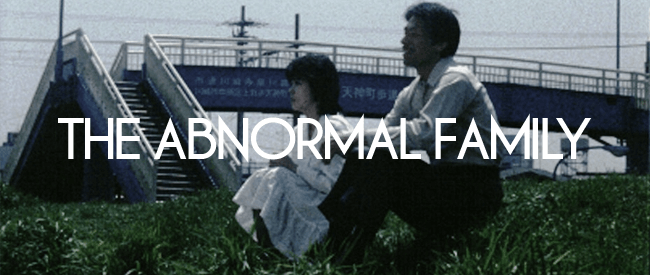
ABNORMAL FAMILY
Dir. Masayuki Suo, 1984
Japan. 63 minutes.
In Japanese with English subtitles.
SUNDAY, NOVEMBER 6 – 7:30 PM
SATURDAY, NOVEMBER 12 – 8:30 PM
SUNDAY, NOVEMBER 20 – 8:45 PM
MONDAY, NOVEMBER 28 – 10:00 PM
This spoof of Ozu Yasujiro would make the Master of Japanese Cinema turn in his grave. The film– so deeply uncomfortable it borders on hilarious– is chock full of references to Ozu’s family dramas, from the “pillow shot” to the low camera angle, stilted dialogue, stylized movement, and still camera. ABNORMAL FAMILY, however, dials Ozu’s intensity and weirdness to 11. The result is a deeply strange film full of family intrigue, sex, and more than one (or two, or three) incestuous overtones. For any Japanese film aficionado, however, it’s not to be missed: it was the debut for its director, Suo Masayuki, who would go on to make SHALL WE DANCE? (1996), one of the most well-known Japanese contemporary films.
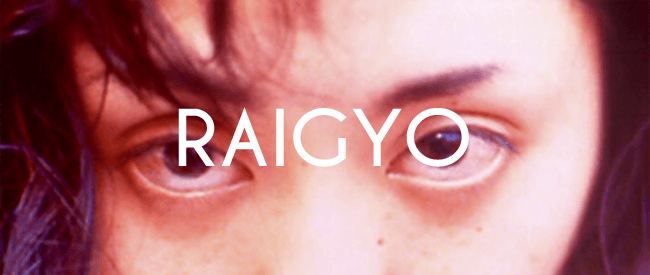
RAIGYO
(aka THE WOMAN IN THE BLACK UNDERWEAR)
Dir. Takahisa Zeze, 1997
Japan. 75 mins.
In Japanese with English subtitles.
TUESDAY, NOVEMBER 1 – 10:00 PM
THURSDAY, NOVEMBER 10 – 10:00 PM
FRIDAY, NOVEMBER 18 – 10:00 PM
A mysterious woman in black… a payphone… a murder seemingly without cause. Director Zeze Takahisa is known as one of the “Four Heavenly Kings of Pink,” and it certainly shows in this surreal and enigmatic film. An incredibly opaque but nonetheless beautifully filmed Pink, RAIGYO perplexes and intrigues. Allegedly based on a true story, and set in 1988, Raigyo depicts three characters: a woman with an unnamed, terrible illness, a fisherman, and a lecherous man who sleeps around while his wife is heavily pregnant. The symbolic title refers to a fish that restaurants generally don’t sell because it is known to carry worms — thus signifying the corruption of the main characters.
Although it is also known by its title THE WOMAN IN THE BLACK UNDERWEAR, Takahisa’s film is more art film than sexploitation. The pace is as oneiric as the plot, and the audience is drawn deeper into the web crafted by Zeze’s quiet, understated, and eerie masterpiece.
A LONELY COW WEEPS AT DAWN
Dir. Daisuke Gotô, 2001
Japan. 61 mins.
In Japanese with English subtitles.
THURSDAY, NOVEMBER 3 – 7:30 PM
SATURDAY, NOVEMBER 19 – 10:00 PM
SATURDAY, NOVEMBER 26 – 5:00 PM
An elderly dairy farmer goes to milk his cows in the morning, only to find his daughter-in-law, naked and on all fours, mooing with the rest of the herd. This bizarre occurrence begins the rest of the film, whose tone is strangely subdued and melancholic for the bewildering events on screen. Director Goto Daisuke claimed Ozu Yasujiro’s LATE SPRING (1949) to be an influence, along with Bernardo Bertolucci’s NOVOCENTO (1976).
The result is a strange, incestuous parable with overtones of social critique: class difference certainly makes itself known, as well as the rift between urban and rural. Beautiful, poignant, but nonetheless immensely weird, the film is a paradigmatic example of the newer generation of Pinks in the 21st century.
THE GLAMOROUS LIFE OF SACHIKO HANAI
Dir. Mitsuru Meike, 2003
Japan. 90 mins.
In Japanese with English subtitles.
Special thanks to Palm Pictures.
WEDNESDAY, NOVEMBER 16 – 10:00 PM
SATURDAY, NOVEMBER 19 – 5:00 PM
FRIDAY, NOVEMBER 25 – 10:00 PM
No Pink Film retrospective would be complete without the absolutely charismatic weirdness of THE GLAMOROUS LIFE OF SACHIKO HANAI, a cult hit by the director Meike Mitsuru. Although an amazing film in its own right, SACHIKO is also an eerie time capsule of George W. Bush’s first few years of office, and is full of entirely un-subtle political overtones. And how could it not? One of the film’s main characters is Dubya’s middle finger! In the film, a call-girl– the eponymous Sachiko Hanai– accidentally witnesses an altercation between North Korean and Middle Eastern spies. When Sachiko is shot in the forehead, the bullet does not kill her, but instead gives her extraordinary genius and mental prowess.
When she ends up finding a metal capsule containing George W. Bush’s finger, whose fingerprint is singularly capable of launching a nuclear holocaust, she must make sure that the wrong side doesn’t find it… or else. The result is a wacky spoof on a political thriller, with memorable and hilarious scenes that will doubtlessly lodge into the viewer’s brain like Sachiko’s magic bullet. First released in 2003, the film has subsequently played at over 20 film festivals around the world.
SPECTOBER V
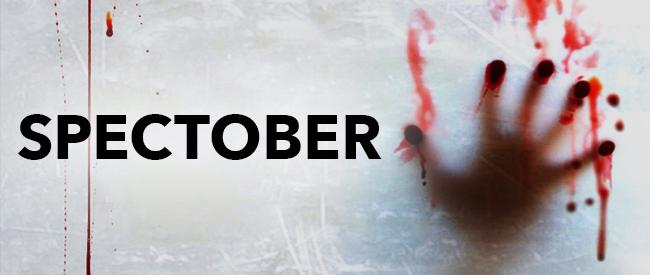
For the fifth year, Spectacle is proud to present a month-long, lovingly-selected series of unknown, mysterious, and shocking films from around the world. This time around includes surreal French slasher reductions, American gore classics, Yugoslavian political repression murder sprees, and a rare full cut of insanity from Mexico’s Panic movement.
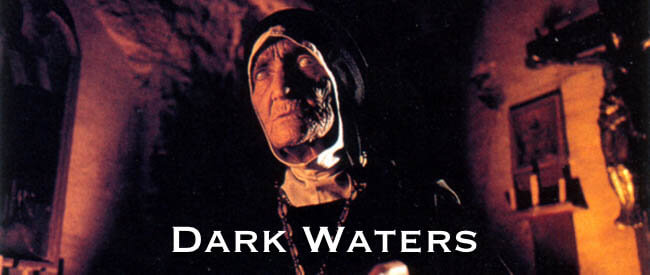
DARK WATERS (TEMNYE VODY)
Dir. Mariano Baino, 1993.
UK/Russia, 94 minutes.
English.
MONDAY, OCTOBER 3 – 7:30PM
THURSDAY, OCTOBER 13 – 7:30PM *Special Introduction by Coralina Cataldi-Tassoni*
TUESDAY, OCTOBER 25 – 10:00PM
DARK WATERS is the recipient of the Prix Du Public at Montreal’s Fantasia Film Festival and the Vincent Price Award at Rome’s Fantafestival and has been hailed as a “masterpiece of arthouse horror” by Filmmaker Magazine’s Scott Macauley and an “unholy hybrid of Bergman and Argento” by Film Review magazine.
Young Englishwoman Elizabeth travels to an ascetic convent on an isolated Eastern European island to settle the affairs of her late father, against his last wishes. Confined by the sea and chambers of the convent, and under the ireful scrutiny of the sisters, Elizabeth experiences disorienting visions of a horror she can not recall. Director Mariano Baino shot the footage for DARK WATERS in Ukraine just after the Soviet Union’s dissolution. The rich cinematography and gorgeous location add to the eeriness of this Lovecraft-adjacent horror story.
Join us Thursday October 13 at 7:30pm for a special screening of DARK WATERS, introduced by actress and multi-talented artist Coralina Cataldi-Tassoni, star of director Mariano Baino’s latest short LADY M 5.1 as well as his upcoming feature, ASTRID’S SAINTS, which Baino and Cataldi-Tassoni co-wrote. Cataldi-Tassoni is known for her work in seminal European films such as Dario Argento’s Opera, Phantom of The Opera, Mother Of Tears and for her starring debut as Sally Day in Lamberto Bava’s Demons 2. Cataldi-Tassoni is also an accomplished painter, singer and musician, and her work can be viewed here.
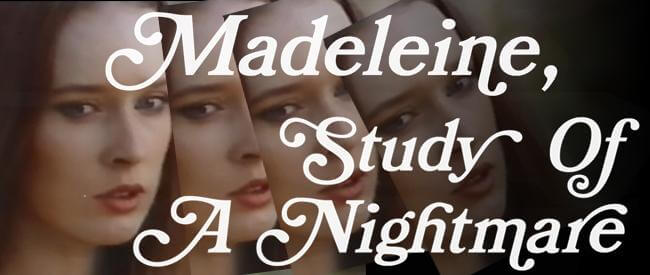
MADELEINE, STUDY OF A NIGHTMARE
Dir. Roberto Mauri, 1974.
Italy, 110 min.
SUNDAY, OCTOBER 2 – 5:00PM
WEDNESDAY, OCTOBER 12 – 10:00PM
SATURDAY, OCTOBER 22 – 5:00PM
Given that writer/director Roberto Mauri’s best known for schlock like THE PORNO KILLERS and CURSE OF THE BLOOD GHOULS, the sustained unease of MADELEINE’s sun-soaked scenes seems happy coincidence rather than intentional. Similar to LE ORME, MADELEINE creates a palpable sense of dread and mystery by delaying an inevitable confrontation with reality (before throwing it away with a boiler plate twist ending). Camille Keaton’s laisse faire acting style works to the advantage of a story about a woman unable to directly acknowledge deep personal trauma, but trying to; her efforts mostly take the form of swanning around a gorgeous Italian villa seducing one man after another (if this is a nightmare, sign me up). And yet, the increasing sense her will is not her own, that her mysterious husband/lover/benefactor isn’t acting benevolently, that her very self is slipping away, turns what could have been mere softcore into a haunting look at a woman struggling with her own id and losing.
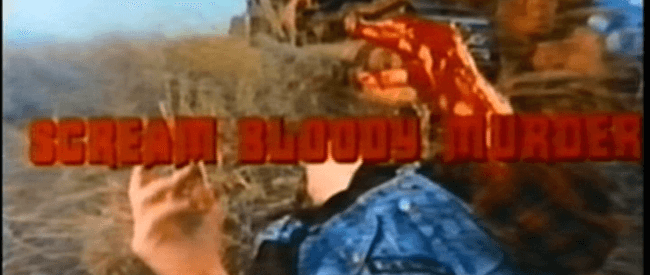
SCREAM BLOODY MURDER
Dir. Marc B. Ray, 1973
USA, 90 Minutes
SATURDAY, OCTOBER 1 – MIDNIGHT
FRIDAY, OCTOBER 14 – MIDNIGHT
SATURDAY, OCTOBER 22 – MIDNIGHT
A troubled young man with a hook for a hand (he lost it as a boy while killing his father with a tractor) and a serious aversion to sex murders anyone who gets in the way of his love for a prostitute in this grimy slasher flick from 1973. Much in the vein of films like “The Witch Who Came From the Sea” and “Criminally Insane,” “Scream Bloody Murder” seems to have crawled directly from the gutter, (though actually it was made by the writers of Ann-Margret and Raquel Welch TV specials) with a warped internal logic that effectively drags you into it’s bleak, blood-drenched world. From the creators of “The Severed Arm.”
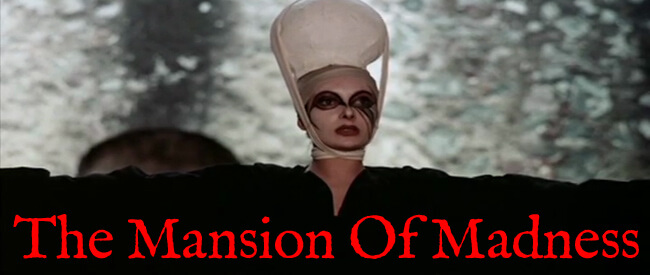
LA MANSION DE LA LOCURA (THE MANSION OF MADNESS)
Dir. Juan López Moctezuma
Mexico, 99 min.
In English (originally shot in English, dubbed into Spanish)
SATURDAY, OCTOBER 15 – 5:00PM
FRIDAY, OCTOBER 21 – 10:00PM
WEDNESDAY, OCTOBER 26 – 10:00PM
“Abandon all hope, ye who enter here.”
Beginning with Poe’s story The System Of Doctor Tarr and Professor Fether, in which a reporter visits an asylum to discover the system by which the insane and the caregivers has become a bit muddled, we enter into a place where political satire and surrealist horror blend into a truly astonishing film, where a man becomes a chicken, the body becomes a musical instrument, and nothing is ever as it seems. Director Juan Lopez Moctezuma (ALUCARDA, MARY MARY BLOODY MARY), a member of Mexico’s Panic movement alongside Alejandro Jodorowski and Fernando Arrabal: the three having worked together on FANDO Y LIS, which should give you some idea of what you’re in for. Led by the great Claudio Brook (CRONOS, THE EXTERMINATING ANGEL) as the mad Dr. Maillard (as well as Raoul Fragonard), the film is as a dream, a ritual, a series of living tableaux. Describing the plot would be to cheapen the film, but it’s worth noting no less than Leonora Carrington served as art director. We are honored to present this film in its longest known cut, with the original English dialogue, miles from public domain cuts. Those expecting cheap horror will be disappointed; those expecting clarity will be confused, those with eyes to see will behold a revelation.
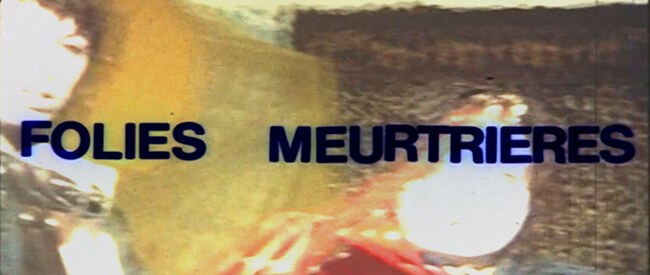
FOLIES MEURTRIERES
Dir. Antoine Pellissier, 1984
France, 47 min.
WEDNESDAY, OCTOBER 5 – 7:30PM
FRIDAY, OCTOBER 28 – 10:00PM
MONDAY, OCTOBER 31 – 10:00PM
The slasher film, like any genre, has various approaches. From the baroque excess of its giallo roots to the meta-awareness of the Scream series, from scuzzy video nasties like The Toolbox Murders and Don’t Answer The Phone! to the satirical aspects of The Slumber Party Massacre, there’s a variation for any taste, so long as your tastes lead to seeing people get killed. It can also be stripped down to its most minimal elements: 80s synth dirge, long POV shots and gruesome set piece murders. That’s what FOLIES MEURTRIERES provides: the slasher boiled down to a kind of dead-eyed late-night trance, all VHS tape hiss and HG Lewis-style gore effects and zero relateable character development or or wisecracking comic relief. Anyone looking for a well-written mimetically plausible story won’t find it here: this is homemade murderdrone haze. Information on this film is sparse, which may be for the best; it’s a film that you might pick up from a box of unmarked VHS tapes on a streetcorner only to discover diseased dreams of torment and bloodshed stained onto magnetic tape. We will say director Antione Pellissier’s day job is medical examiner, which is fitting for a film far closer to Grand Guignol than the action-film-jump-scare world of contemporary horror.
“The woozy, warped tape of Folies Meurtrieres has no subtitles. That’s okay, as there are maybe five lines in the film that aren’t a narrator reading off the date of the murder you are about to see. The 47 minute film is just that: a series of murders without context or plot, and within each murder sequence lies a different variation on the classic slasher scenario.” -Peter Galvin, MURDERDRONE
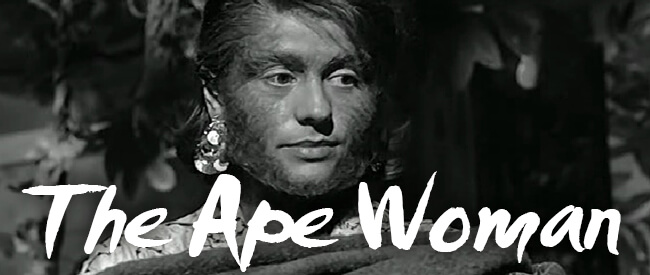
THE APE WOMAN
(aka LA DONNA SCIMMIA)
Dir. Marco Ferreri, 1964
Italy/France, 100 min.
THURSDAY, OCTOBER 6 – 7:30PM
TUESDAY, OCTOBER 18 – 10:00PM
SUNDAY, OCTOBER 23 – 5:00PM
By means of disclosure: THE APE WOMAN is not a scary movie per se, but rather a withering satire of masculinist culture, the apparatus of “freak show” exploitation, and the tacit racisms of the so-called Western World. (Who would expect anything less from Italian auteur Marco “DILLINGER IS DEAD” Ferreri?) Annie Giradot stars as the nominal donna scimmia Marie, a beautiful young woman suffering a rare condition that covers her body with long, thick hair – based on the real-life case of Julia Pastrana, whose hypertrichosis terminalis left her resembling a cross between simian and human. She comes under the thumb of an opportunistic lout played by Ugo Tognazzi, who begins to make big plans for the two of them – showing Marie off, concocting bogus tales about her discovery “in Africa”, training her to whoop and holler for the audience.
Via Marie’s prolonged expectations and unfulfilled hopes, a tender and devastating parable ensues, a study in gender relations (to say nothing of the Italian Catholic church) and the politics of what is/isn’t “scary” according to 20th century showmanship. THE APE WOMAN still has plenty to say, and fits alongside THE SEED OF MAN and BYE BYE MONKEY as one of Ferreri’s blistering works that’s long overdue for reevaluation.
“The only redeeming feature of this oddly distasteful film is the fact that a certain haunting pathos does emerge from it.….It is evident that the censors have used their shears on this film. The producer should have beat them to it. He should have used shaving cream.” – Bosley Crowther, The New York Times
DÉJÀ VU (VEC VIDJENO)
Dir. Goran Markovic, 1987
Yugoslavia, 102 min.
MONDAY, OCTOBER 3 – 10:00PM
TUESDAY, OCTOBER 18 – 7:30PM
SUNDAY, OCTOBER 30 – 5:00PM
Déjà vu concerns a troubled piano teacher, Mihailo (Mustafa Nadarevic), and his efforts to come to terms with reality through a love affair with a poor but industrious girl, Olgica (Anica Dobra). When she dumps him for a younger boyfriend (hoping to make a political career in the Communist Youth organization), Mihailo is overrun by the ghosts of his past and begins a killing spree. Flashbacks which explain the killer’s motivation are intrinsic to the film’s central idea. The apparent contrast between the past and the present becomes a parallel, thanks to the clever transitions between shots. Mihailo becomes unable to distinguish the ‘reflections’ of the past upon his own present, and is thus driven over the edge.
Written by Ghoul via IMDB


